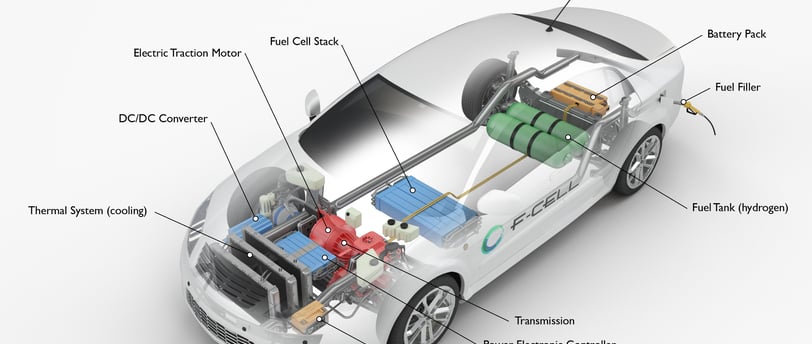The Rise of Hydrogen Fuel Cell Vehicles: A Clean Mobility Revolution
5/20/20251 min read


Hydrogen Fuel Cell Vehicles (HFCVs) are emerging as a promising solution in the global push toward sustainable transportation. Unlike traditional internal combustion engine vehicles, HFCVs generate electricity through a chemical reaction between hydrogen and oxygen, producing only water vapor as a byproduct. This makes them an environmentally friendly alternative with zero harmful emissions.
One of the key advantages of hydrogen vehicles is their quick refueling time—comparable to gasoline or diesel cars—offering a significant edge over battery electric vehicles (BEVs), which often require lengthy charging periods. Additionally, HFCVs typically offer longer driving ranges, making them ideal for long-distance travel and commercial transport.
Automakers like Toyota, Hyundai, and Honda have already launched hydrogen-powered models such as the Mirai and NEXO, while countries like Japan, South Korea, and Germany are investing heavily in hydrogen infrastructure. This includes expanding the network of hydrogen refueling stations and promoting hydrogen production through renewable energy sources.
Despite their potential, hydrogen fuel cell vehicles face several challenges. Limited refueling infrastructure, high production costs, and the current reliance on fossil fuels for hydrogen extraction remain major hurdles. However, advancements in green hydrogen—produced using renewable energy—are paving the way for a more sustainable hydrogen economy.
HFCVs are particularly well-suited for sectors where battery limitations pose challenges, such as heavy-duty trucks, buses, and fleet operations. As technology matures and investments grow, hydrogen vehicles are expected to play a crucial role alongside electric vehicles in decarbonizing the transportation sector.
In conclusion, while still in its early stages, the rise of hydrogen fuel cell vehicles signals a powerful shift toward clean, efficient, and scalable mobility solutions for the future.
Contacts
7992284974
contacts@carparts24.in
